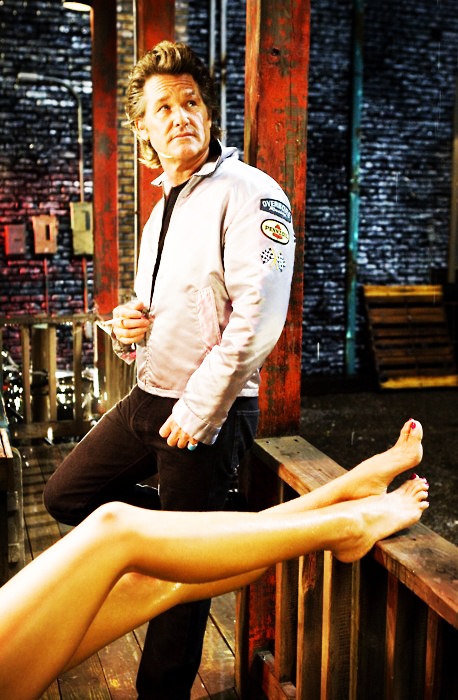

There are several reasons why Death Proof tends to draw the short shrift in the Tarantino filmography. Indeed, the question of whether the film “counts” often comes up in trying to take stock of Tarantino’s filmography – along with “is Kill Bill really one film?” – when considering the director’s arbitrarily self-imposed suggestion that he should retire after ten films. It was initially excluded from a recent Time magazine article looking at how many lines female characters had in a Tarantino film a curious exclusion considering that it was the Quentin Tarantino film with the most female characters. Notably, the opening chapter of Inglourious Basterds is even helpfully subtitled “Once Upon a Time in Nazi-Occupied France.” It is a logical point of comparison, but one that conveniently glosses over an even more obvious reference point for Once Upon a Time… in Hollywood within Tarantino’s filmography.ĭeath Proof is often overlooked in terms of Tarantino’s filmography. Both stories are effectively historical revisionist fairy tales. However, his best friend is a reckless stuntman who may have killed his wife.Ī lot of the discussion around Once Upon a Time… in Hollywood has likened it to Inglourious Basterds. There are also shades of the tragedy to be found in Once Upon a Time… in Hollywood, which features two protagonists that are – to quote actor Brad Pitt – “two sides of the same coin.” Rick is a washed-up has-been who worries he is out of touch. Inglourious Basterds famously offers an alternate ending to the Second World War, a striking piece of historical revisionism. It is notable, for example, that a lot of Tarantino’s later work focuses explicitly on the idea of rewriting history.
.jpg)
The tragedy echoes through a lot of Tarantino’s subsequent work. ( Tarantino allegedly promised the script to the actor as a thirtieth birthday present.) The story for the Kill Bill films is credited to “Q and U”, the pair practically living together during the development of the story. Tarantino has conceded, “Beyond one of the biggest regrets of my career, it is one of the biggest regrets of my life.” It is notable that Tarantino had always been particularly close to Thurman. ( Tarantino’s public support of progressive causes like Black Lives Matter also plays a part, even if there is still a larger debate to be had about Tarantino’s relationship with African American culture.)Įven if none of this was made public until after the release of The Hateful Eight, these details hang over a lot of Tarantino’s work since the accident. This complexity is compounded by the fact that Thurman has publicly forgiven Tarantino for his part in the accident, and for Tarantino’s contrition on that point. The case involving Tarantino and Thurman is perhaps more complicated than a lot of the similar stories of directorial abuse that have entered the spotlight since the #metoo movement rippled through Hollywood. Tarantino has been known for making brass pronouncements and asserting his authority, from his famous assertion that he is god within his fictional universes to his insistence on shutting down lines of questioning in interviews to rejecting reporters’ questions outright. Tarantino is remarkable among directors of his generation for establishing a cult of personality, being as effective on the chat show circuit as behind the camera. It was an act of reckless malfeasance from a director who had – with Reservoir Dogs and Pulp Fiction – announced himself as one of the preeminent directorial voices of his generation. I felt this searing pain and thought, ‘Oh my God, I’m never going to walk again.’” Thurman was not paralysed, but she was scarred by the experience, with a “permanently damaged neck and screwed-up knees.” Thurman recalls, “The steering wheel was at my belly and my legs were jammed under me. By all accounts, Tarantino pressured Uma Thurman into driving a stunt car herself, leading to an accident. Details of that incident would not be made public for more than a decade and a half, although it would have a profound impact on all involved. The six year gap following Jackie Brown was the longest in his career to that point.Īs shooting was winding down, an incident occurred on the set. In fact, the films came after something of a short break in the director’s career.
#Stuntman bob death proof movie#
A director best known for his snappy dialogue and vivid characters was pushing himself outside of his comfort zone, building a movie that would incorporate elaborate action sequences and even an animated interlude. There were a variety of reasons for this, most obviously that the film represented a departure from the stylistic sensibilities and aesthetic associated with Quentin Tarantino. I love that philosophy! “Warren says it, we do it.” If he sends over shots, you gotta do them. Okay… Warren’s sending over shots, and you know the house rules.


 0 kommentar(er)
0 kommentar(er)
